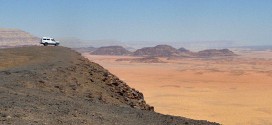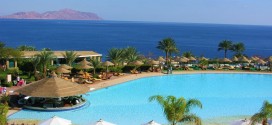W

as the Greek city of Apollinopolis Magna and an important religious and commercial center. Located about 52 kilometers south of Esna and 104 kilometers north of Aswan, the modern Edfu is a commercial town producing mainly sugar and pottery. It is also a hub of a road network. Edfu once was the capital of the second Nome of Upper Egypt. The Temple of Horus, which is considered the best preserved temple in Egypt, stands on the west side of the Nile.
The Horus Temple at Edfu
The temple was built during the reigns of six Ptolemie kings and is dedicated to the falcon god Horus. Many reliefs on the outside walls of the temple picture its construction. It was begun in 237 BC and finished in 57 BC.
The Edfu Temple is not only the best preserved ancient temple in Egypt but also the second largest after Karnak Temple. It is believed that the temple was built on the battleground of a fierce fight between Horus and Seth. Hence, the current temple was but the last in a long series of temples build on this location. It is said that the very first structure was a grass hut housing a statue of Horus built in prehistoric times.
The temple contains a pylon of Ramses II which stands in a 90 degrees angle to the current building. The main building, which includes a great Hypostyle hall, was uncovered by Mariette in the 1860s. There are numerous reliefs including a depiction of the feast of the beautiful meeting, the annual reunion between Horus and his wife Hathor.
A colonnade and various reliefs showing still the original color are just outside the main temple. These images portray the birth ritual of Harsomfus, son of Horus and Hathor. The pylons of the main temple are about 36 meters high with typical scenes of the Pharaoh in battle with his enemies. Within the pylons is the colonnade courtyard which leads into the great hypostyle hall. On either side of the courtyard are gates which lead to an area behind the temple with inscriptions recording donations of land which were probably transferred from demotic documents. There are also dramatic images depicting the defeat of Seth by Horus.
The façade of the first hypostyle hall shows images honoring Horus and Hathor, and then there is an immaculate three meters tall colossus of Horus as the falcon god. Beyond the great hypostyle hall opens a second, smaller hypostyle hall which leads to the “Chamber of the Nile” with a water well, a place where the priests performed ceremonies with pure holy water. Doors on the west side of the room lead to a small laboratory with recipes engraved on the walls for ointments and perfumes which were used daily to anoint the statue of Horus.
 Sakura Travel World Group
Sakura Travel World Group








